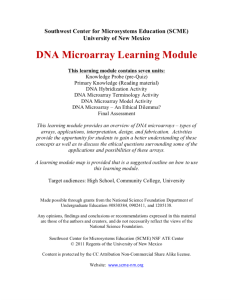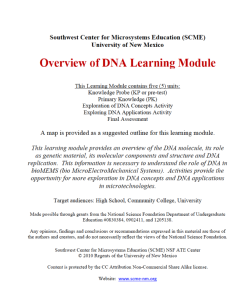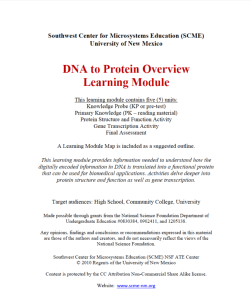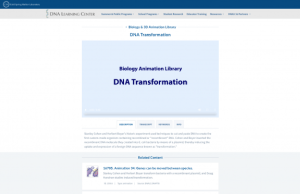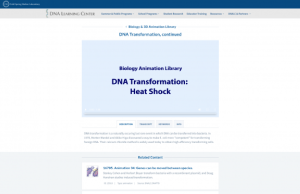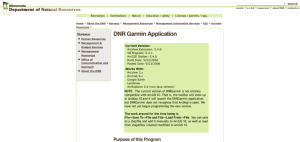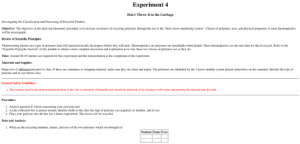Browse Resources
Resources | |
|---|---|
Module Description:
This module, from Support Center for Microsystems Education (SCME), introduces participants to DNA microarrays. The module covers types of arrays, applications, interpretation, design, and fabrication. Included "activities provide the opportunity for students to gain a better...
Module Description:
This module, from Support Center for Microsystems Education (SCME), provides "an overview of the DNA molecule, its role as genetic material, its molecular components and structure and DNA replication." The module is divided into the following five units: Knowledge Probe (KP or...
The discovery of enzymes that could cut and paste DNA made genetic engineering possible. Restriction enzymes, found naturally in bacteria, can be used to cut DNA fragment at specific sequences, while another enzyme, DNA ligase, can attach or rejoin DNA fragments with complementary ends. This...
Module Description:
This module, from Support Center for Microsystems Education (SCME), provides students with "information needed to understand how the digitally encoded information in DNA is translated into a functional protein that can be used for biomedical applications." This module is divided...
Stanley Cohen and Herbert Boyer's historic experiment used techniques to cut and paste DNA to create the first custom-made organism containing recombined or 'recombinant' DNA. Cohen and Boyer inserted the recombinant DNA molecule they created into E. coli bacteria by means of a plasmid, thereby...
DNA transformation is a naturally occurring but rare event in which DNA can be transferred into bacteria. In 1970, Morton Mandel and Akiko Higa discovered a way to make E. coli more 'competent' for transforming foreign DNA. Their calcium chloride method is widely used today to obtain high-efficiency...
This website from the Minnesota department of natural resources provides information on the Garmin DNR application. The purpose of the application, its functionality and screenshots are included. The site also includes links which may be used to download the program.
This 1-page document, from the Advanced Technology Environmental and Energy Center (ATEEC), summarizes a learning activity that helps students studying the concepts of biotic/abiotic factors and biodiversity. In the activity, students collect samples from outdoor areas, interpret data, and discover...
The Materials Science and Technology Teacher's Workshop (MAST) provides this lesson plan for students learning about polymers. The exercise will investigate the use of the "three arrow numbering system" for recycling polymers. The lab covers classes of polymers, their uses and physical properties of...
This two-part exercise, created by Jeannie Allen and offered by the Integrated Geospatial Education and Technology Training Project (iGETT), introduces students to the process of locating and downloaded Landsat data from the United States Geological Survey (USGS) GloVIS website (part one), and how...
| |
| ← Previous | Next → |
